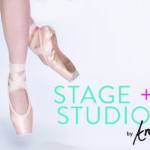This week, we take a look into Louisville Ballet’s Annie Honebrink’s mind and what imagination means to her in the scope of dance.
The world of make-believe has always fascinated me. As a child my imagination carried me across the world and beyond. I became a pirate, a princess, a wizard, a warrior. I danced at the Mariinsky, medaled in the Olympics, and solved countless mysteries. My backyard held endless possibilities; my house was a fortress of fantasy. Music was always a part of my stories. The boom box followed me around, singing me the story. Telling me how to feel. It wasn’t until I was much older that I realized most children are not serenaded by music while playing with their Barbie dolls.
Grandma’s playroom was a waiting canvas. We painted story upon story. Grandma would cry out in genuine alarm as I fell dramatically to the floor. We became so invested in the story that our hearts broke with each conflict. Our tears were real.
Imagination is the root of dreams, and dreams are the wings of ingenuity and creation. Imagination is often the inspiration behind great art. I find we tend to forget this as adults. The further we stray from the realm of make-believe, the more difficult it becomes to access those impressions. Perhaps this is why children seem to understand many parts of the world so much more clearly. They have not yet forgotten how to be artists.
Teaching the Ballet Journeys summer dance camp reminds me of the brilliant ability imagination has to inspire. The enthusiastic group of six, seven, and eight year olds brings me back to the days when tattered old sheets could be transformed into elegant velvet curtains, and all I needed to do to fly was think happy thoughts. As they brainstorm ideas for the story ballet they will present to their parents at the end of the week, I can see the wheels turning behind their bright, wide eyes. I can feel their eagerness to create pulsing from within. Beating in their souls. They design, draw, and color the scenery backdrop for their performance with more diligence and patience than I thought possible for one younger than ten years. When they enter the studio—turned stage—for their performance, they sweep their families away into their world of make-believe. They pull us along on their journey.
My favorite part of teaching children is watching their free dance time—the time they have to improvise. I love to see how the music speaks to them. How it moves them. They remind me to keep my imagination open. They remind me to allow myself be to be inspired. They remind me to dream.

